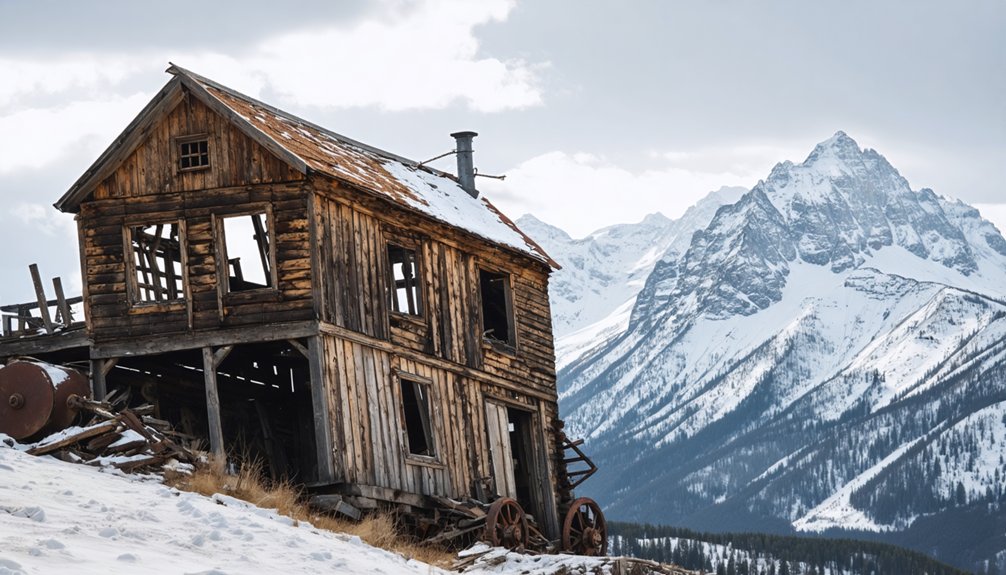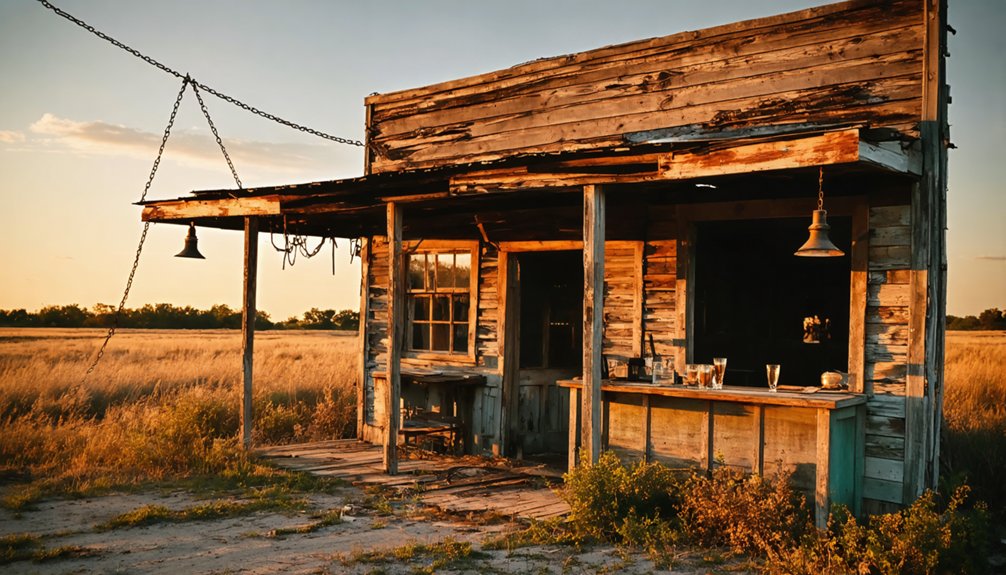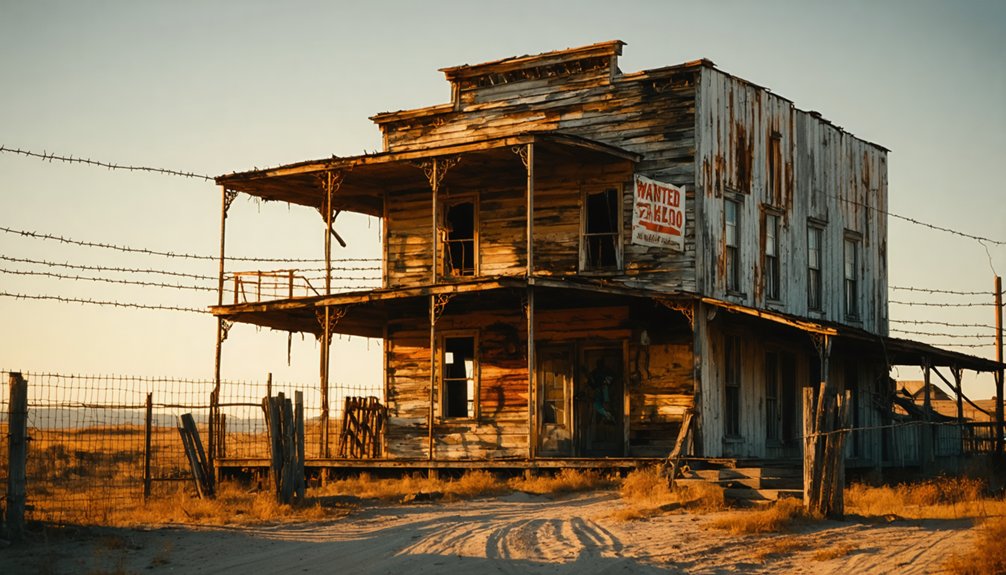When exploring Alaska’s abandoned mining towns, you’ll need careful planning as these remote sites lack public transport. Pack essential gear like waterproof hiking boots, headlamps, and layers for unpredictable weather. Never explore structures alone and always assess stability before entering. Capture the perfect shot during golden hour with a tripod for stability. Always respect historical preservation laws and leave everything as you found it. These ghost towns hold countless secrets waiting for respectful adventurers to discover.
Key Takeaways
- Plan visits during summer (June-August) for optimal access and check current road conditions with local authorities.
- Pack essential gear including layered clothing, waterproof boots, headlamp, and emergency supplies.
- Never explore abandoned structures alone and assess structural integrity before entering any building.
- Frame photographs during golden hour and use a tripod for stability in low-light conditions.
- Respect historical preservation laws, including Alaska’s regulations protecting culturally significant sites.
Planning Your Visit to Remote Ghost Town Locations
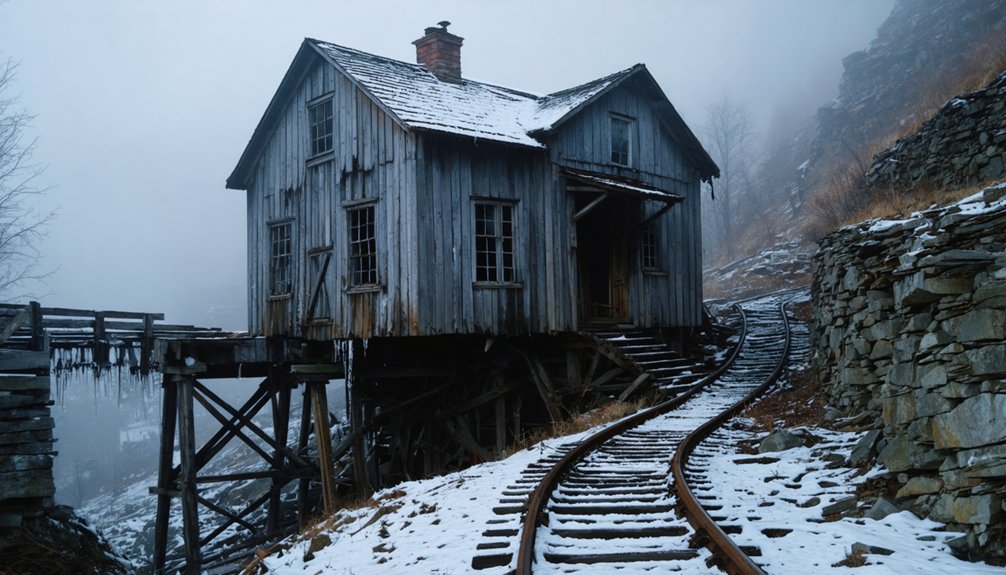
While Alaska’s abandoned mining towns offer a fascinating glimpse into the state’s rugged past, reaching these remote ghost town locations requires careful planning and preparation.
Places like Kennecott demand self-sufficiency—you’ll need your own vehicle to navigate the 60-mile gravel McCarthy Road, as public transportation doesn’t serve these isolated areas. Some locations, such as Sulzer, are only accessible by boat or small plane.
Before setting out, check current road conditions and weather considerations with local authorities. Travel logistics vary seasonally, with summer (June-August) offering the most reliable access.
Winter visits require specialized equipment and experience. Remember that cell service is virtually non-existent, gas stations are scarce, and emergency services limited—so pack accordingly and always share your itinerary with someone reliable. Consider taking a guided tour to gain valuable historical context and insights about these abandoned mining sites.
Many visitors are drawn to Kennicott specifically to witness the remnants of what was once the richest copper source in the world, with over $200 million worth of copper extracted before its abandonment.
Essential Gear for Alaskan Ghost Town Exploration
The harsh Alaskan wilderness demands proper preparation when venturing into its abandoned mining towns. Master layering techniques with synthetic base layers topped by lightweight raingear to adapt to rapidly changing weather conditions.
Your footwear choices can make or break your exploration—opt for waterproof, well-broken-in hiking boots for traversing rugged terrain and unexpected stream crossings.
- Pack a reliable headlamp for investigating dark mine entrances and dilapidated structures
- Bring binoculars to spot wildlife and examine distant architectural details safely
- Carry a waterproof bag to protect electronics and historical documentation
- Don’t forget insect repellent and a headnet during peak mosquito season
Keep your gear lightweight but thorough—your adventure depends on being properly equipped while maintaining mobility through these forgotten frontier outposts. The 60-mile McCarthy Road presents significant challenges with its potholes and railway remnants, so include basic vehicle repair tools if driving to these remote locations. Remember to pack extra memory cards for your camera to capture the haunting beauty of these historical sites.
Safety Precautions When Exploring Abandoned Structures

Venturing into abandoned Alaskan mining structures presents dangers that demand serious respect and preparation. Always assess structural integrity before entering—what appears solid may collapse under your weight. Support timbers and flooring have weathered decades of harsh Alaskan conditions, making them unpredictable.
Don’t explore alone. Inform someone of your location and expected return time. Carry a headlamp even during daylight and wear protective gear: sturdy boots, gloves, and long clothing. Consider bringing a respirator or N95/P100 mask for protection against potentially hazardous airborne particles. Extreme Alaskan weather conditions can rapidly deteriorate old structures, similar to how permafrost damage affected buildings in traditional settlements.
Solo exploration is a deadly mistake. Always bring companions, share your itinerary, pack proper lighting, and dress defensively.
Environmental hazards lurk everywhere—from contaminated water to unstable explosives and respiratory threats from mold or asbestos.
Before entering any building, walk its perimeter to identify safe entry points and escape routes. Watch for tell-tale signs of impending collapse, such as sagging ceilings or floors that have already given way nearby.
Best Photography Techniques for Capturing Historic Mining Sites
With safety precautions firmly in mind, let’s shift our focus to capturing the haunting beauty of these historic sites.
Alaska’s abandoned mining towns offer photographers incredible opportunities to document weathered structures against dramatic landscapes. Master these composition techniques and lighting strategies to create powerful images that tell stories of the past.
- Frame your shots during golden hour (early morning or late afternoon) when soft, directional light accentuates textures and creates atmospheric shadows.
- Incorporate leading lines from old tracks or building edges to draw viewers into your composition.
- Use a tripod for stability in low light and to capture long exposures that reveal details in dark interiors.
- Balance dramatic contrast by bracketing exposures or using fill light to illuminate shadowy areas.
When exploring these abandoned locations, experiment with different lenses to achieve varied perspectives that can dramatically change the emotional impact of your photographs.
Consider allocating at least two days at each location—one for scouting the site and another dedicated to shooting once you’ve identified the best compositions.
Respecting Historical Preservation During Your Adventure
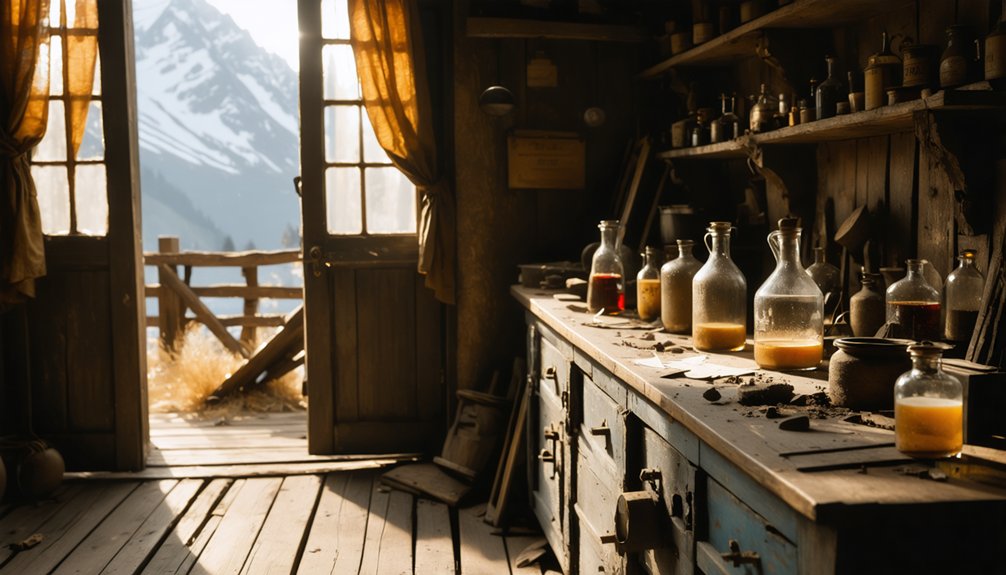
While exploring Alaska’s fascinating mining ghost towns, you’ll need to understand the legal and ethical frameworks that protect these irreplaceable historical treasures.
Alaska’s preservation laws, established in 1971, safeguard sites of cultural significance including the historic districts of Ester, Chena Pump, and Chatanika.
Remember that Native burial grounds and archaeological sites discovered during pipeline studies are protected under state law.
When photographing structures, respect that they’re evaluated using National Register guidelines and may be considered both archaeological resources and heritage assets.
You’ll be following in the footsteps of thirteen Alaska communities that actively participate in preservation through the Certified Local Government program.
Always adhere to legal guidelines that authorize state officials to protect abandoned mine properties, ensuring these remnants of Alaska’s gold rush era survive for future adventurers.
Frequently Asked Questions
Can Children Safely Explore Abandoned Mining Towns in Alaska?
Like lambs in a wolf’s den, your children aren’t safe in these hazardous sites. You shouldn’t bring them due to structural collapse risks, toxic materials, and remote locations. Exploration guidelines strictly discourage child visits.
Are There Paranormal Sightings Reported in Kennicott or Other Ghost Towns?
Yes, you’ll encounter numerous reports of ghostly encounters in Kennecott, where visitors describe vanishing tombstones, phantom laughter, and shadowy figures—all woven into the area’s rich historical legends and paranormal reputation.
What Wildlife Might You Encounter in Abandoned Alaskan Mining Settlements?
Nature’s guardians await your intrusion—you’ll encounter bears, moose, wolves, and eagles in these reclaimed territories. Mountain goats traverse Kennicott’s slopes while coastal towns offer puffins and otters. Wildlife sightings reflect mining’s ecological impact.
How Accessible Are Ghost Towns During Winter Months?
Ghost towns become nearly inaccessible in winter. You’ll face impassable snow conditions, closed roads, and limited air access. Your winter travel requires specialized vehicles or might be impossible without proper planning.
What Artifacts Can Visitors Legally Collect From Abandoned Mining Sites?
You can’t legally collect artifacts from abandoned mining sites. Legal restrictions prohibit removing anything—bottles, tools, bones, or structures. All items remain protected by law as part of Alaska’s treasured historical record.
References
- https://www.alaska.org/detail/kennicott-mine-ghost-town-walking-tour
- https://thealaskafrontier.com/ghost-towns-in-alaska/
- https://www.youtube.com/watch?v=Cz0IGc2Uy0E
- https://getlostinamerica.com/alaska-ghost-towns/
- https://www.nps.gov/wrst/learn/historyculture/kennecott-mines-national-historic-landmark.htm
- https://www.smithsonianmag.com/travel/let-these-photos-take-you-alaskas-abandoned-mining-towns-180975933/
- https://en.wikipedia.org/wiki/List_of_ghost_towns_in_Alaska
- https://www.atlasobscura.com/things-to-do/alaska/ghost-towns
- https://motorcyclemojo.com/2015/09/alaska-ghost-towns/
- https://www.geotab.com/ghost-towns/
